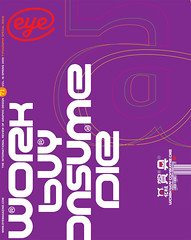Spring 2009
Pink is the new black(letter)
Fraktur Mon Amour
By Judith Schalansky<br>Verlag Hermann Schmidt / Princeton Architectural Press, Euros 49.80 / dollars 75 / £45 (2nd revised edition)Since 1998, when Peter Bain and I staged the exhibition ‘Blackletter: Type and National Identity’ at the Cooper Union in New York, blackletter has increasingly shed its image as the province of Nazis, heavy-metal bands, beer brewers and churches. ‘The typographical taboo surrounding blackletter has been broken, even if its use remains ambivalent, sometimes even contradictory,’ says the Berlin-based designer Judith Schalansky. One measure of that change has been the design of T, The New York Times Style Magazine (art-directed by Janet Froelich), which has embraced the Textura ‘T’ as a blank canvas on which artists and designers can romp and play. Another is the publication of Fraktur Mon Amour by Schalansky, which is now in its second (revised and enlarged) edition.
Fraktur Mon Amour is essentially a compendium of currently available digital blackletter fonts (expanded to cover 333 of them) preceded by a few words by Schalansky and supplemented by a CD of 150 free fonts. Since its initial publication in 2006, it has been a raging success. The design, which deliberately thumbs its nose at the standard image of blackletter, is a key factor in that success. The book looks like a Bible with its squat proportions and placemarker ribbons – except that its title and its page edges are in hot pink. Although not a shade I like, its choice as a second colour was a brilliant decision. It not only yanks blackletter out of its medieval and unfortunate political associations, but it also signals that blackletter is not inherently masculine or even ‘black’.
The fonts in Fraktur Mon Amour are a mix of the excellent, the important and the trivial. But this is surely one part of its popularity. Schalansky has brought blackletter to the people. The book is a bold and welcome addition to the sparse literature on blackletter, and the only real quibble I have with it is that the useful appendix on how to use blackletter fonts properly is only in German in the Verlag Hermann Schmidt edition, and is excluded entirely from the US edition.
Paul Shaw, letter designer, design historian, New York
First published in Eye no. 71 vol. 18 2009
Eye is the world’s most beautiful and collectable graphic design journal, published quarterly for professional designers, students and anyone interested in critical, informed writing about graphic design and visual culture. It is available from all good design bookshops and online at the Eye shop, where you can buy subscriptions and single issues.

